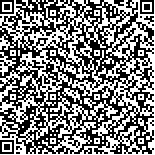| 摘要: |
| 健康城市背景下的各类建设活动不断
强化对公众生活的健康关护,作为我国城市夜景
建设的重要组成,媒体立面动态照明由于基础
研究不足、标准规范缺失等问题引发了众多社会
与环境问题。研究设计并搭建了一套用于评估
媒体立面动态照明舒适感的实验装置,结合主
观量表与眼动数据探讨了光色、动态持续时间、
观察距离等关键变量下观察者的视觉舒适感变
化规律。随后通过城市环境实验对实验室结论
进行验证,结果表明二者在结论上具有较好一
致性。具体包括:距离变量下,观察距离越远,
舒适感越高。亮度变量下可接受的亮度水平内
亮度升高舒适感上升,当亮度超出可接受范围
时,更高亮度会引起舒适感的快速下降;最高
亮度相较于平均亮度更易引发不适感。动态持
续时间变量下,舒适感与动态时长以正比关系为
主导;多数被试更偏好3 s及以上的动态持续时间。光色变量下,在可接受的刺激强度内彩色光对个体间的影响差异明显,而白光提供的舒适感
水平较为统一;当刺激超出可接受范围时,彩色光会带来更强不适感。同期结合研究结论提出媒
体立面设计和管控过程中的相关建议和待完善内容,以助力媒体立面实践管控和后续更深入、广
泛的研究。 |
| 关键词: 媒体立面 动态照明 舒适感 眼动 主观量表 |
| DOI:10.13791/j.cnki.hsfwest.20240221 |
| 分类号: |
| 基金项目:上海科委项目(22dz1202400) |
|
| Visual comfort oriented dynamic lighting evaluation of media facade: Based oncomparative analysis of laboratory and urban environment |
|
FENG Kai,HAO Luoxi
|
| Abstract: |
| In the context of healthy cities, construction activities in many cities around the world have
strengthened the protection towards public life and health. As an important component of urban
infrastructure, urban lighting plays an important role in serving the public’s night outdoor activities
and improving the quality of the city’s night scene. Health issues at nighttime were constantly
discussed, but the detailed impacts of various newly developed lighting technology on public health
is not comprehensive. As one of the important contents of nightscape, media facade has been applied
in many cities, and its high brightness, multi-color, dynamic and other characteristics have aroused
widespread discussions all over the world. As there are still problems such as insufficient basic
research and unclear regulatory control requirements, media facade lighting have caused many
issues related to visual comfort, aesthetic quality, etc. Combining the characteristics of displaying
to supply the comfort assessment in dynamic scenes could provide scientific support for a more
scientific and precise management and control towards media facade. This research were conducted
in two steps: laboratory (indoor) and urban (outdoor) environment. The former step simulated the
spatial characteristics of media facades in urban environments by building a set of experiments
to evaluate the visual comfort in dynamic lighting scenes. The device consists of three parts
including observer, observation box and lighting component. The most common scenes in cities
were selected as experimental variables through network data, on-site surveys, including six light
colors (3000K/4000K/5000K/red/blue/RGB), five dynamic durations (2s / 4s / 6s / 8s / 10s), and
combined with laboratory’s conditions, three observation distances (3m / 6m / 9m) were obtained.
The subjective questionnaire in the experiment was based on SCL-90, four items including sector 17,
39, 57, and 78 in the “anxiety” dimension and two items of sector one and four in the “somatization”
dimension were selected. Combined with research needs, an overall level of comfort evaluation item
(“overall comfort”) is added in the questionnaire. In terms of physiological indicators, an eye tracker
(aSee Glasses) was selected to collect eye movement data, including heat maps and eye movement
trajectory maps. Data received was analyzed by R language to sort out the changing characteristics
of visual comfort produced by subjective scales and eye movement data under key variables explain
above. Laboratory conclusions were verified through urban scenes, 11 media facades in city were
selected and evaluated from three observation distances including near, medium and far through
subjective scales. A comparative analysis of results of two scenes was conducted, which showed
that the conclusions were consistent including: under the variable of distance, visual comfort and
observation distance showed an inverse relationship. Under the variable of brightness, with anacceptable brightness level, the comfort increases as the brightness increases but when the brightness exceeds the acceptable range, higher brightness will
cause a sharp decrease in comfort. On the other hand, the highest brightness is more likely to cause discomfort than the average brightness. Under the
variable of dynamic duration, the relationship between comfort and dynamic duration is dominated by a direct proportion which is a longer dynamic duration
will bring a more comfort feedback. Most subjects prefer dynamic durations of three seconds and above. Under the variable of light color, with an acceptable
stimulation intensity, the impact of colored light on individuals varies significantly, while the level of comfort provided by white light is relatively uniform.
When stimulation exceeds the acceptable range, colored light will cause stronger discomfort than white light. In the end, suggestions towards media facade
design and management were put forward, as well as content to be improved in the future.
The study designed a new experimental device that can provide support for subsequent variable related researches in media facade scenes.
By comparing the conclusions of laboratory and city, an optimization method for media facade comfort evaluation is proposed, which can provide
methodological reference for future related research. Through subjective evaluation and assessment of eye movement data, the applicability of the eye
movement method in media facade scenes is demonstrated. The research conclusions can effectively improve the relevant research on key management and
control indicators of media facades, which provide support for further studies, construction activities, and management, and promote the improvement of
basic research on media facades. |
| Key words: media facade dynamic lighting comfort evalution eye movement subjective scale |


